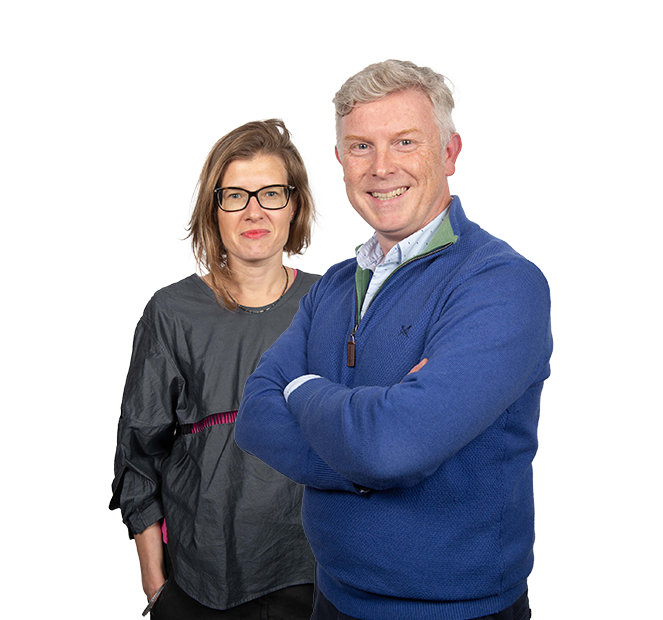
In a rapidly evolving business landscape, strategic organisational design has never been more critical. This was the central theme of our recent panel discussion titled, ‘The experts’ guide: Design your operating model for growth, cost & agility’.
Targeting business leaders across all sectors, the discussion consisted of practical insights and tools for effectively navigating the complexities and challenges of today’s dynamic business environment. Attendees were also given a roadmap for understanding and implementing effective organisational design strategies in any business context.
You can listen to the podcast of this discussion below, as well as via streaming platforms Spotify, Amazon Music and Google Podcasts.
Our four experts each brought a unique perspective to the table, ensuring a comprehensive exploration of the topic. The all-Q5 panel consisted of:
Exploring topical questions such as:
Several factors can prompt the need for operating model redesign, including:
In particular, the need to reduce cost is one of the more common triggers that we’re seeing, as many organisations are being forced to think carefully about their cost base in an increasingly unstable economy. Cultural issues were also highlighted as an interesting yet overlooked catalyst. Siloed ways of working, the emergence of subcultures, and poor post-acquisition integration can significantly impede growth, triggering the need for cultural re-alignment and operating model redesign.
Organisation design as a process is often viewed as resource-intensive, tedious, and expensive. However, its long-term benefits have been exemplified time and time again, which warrants serious consideration for leaders to explore how and where it fits into their own business. Although it’s difficult to establish the most ideal time for a redesign, a useful place to start would be after a thorough risk assessment and reassessment of value drivers. Regardless of when or how it’s done, leaders should always prioritise alignment with strategy to ensure a smooth transformation.
Navigating organisational design often involves managing the balance between short-term demands and long-term strategic goals. When short-term gains are prioritised above long-term objectives, or vice-versa, this imbalance can hinder the sustainable success of a business. Our panel shared real-world examples from various industries, such as broadcasting, social media, energy, and retail, that illustrates this challenge specifically.
Common challenges we see across sectors:
Effective leadership is paramount for creating a synergistic approach that supports immediate operational needs without undermining the long-term strategic vision. This involves constructing strategies that are agile and adaptive, ensuring the organisation not only thrives in the present but is also robustly prepared for future challenges.
An Organisational Health Assessment is necessary for understanding the success drivers within any business, as well as the areas of priority that will bring it closer to achieving the desired outcomes of a potential redesign. At Q5, we use this to help clients gain deep insight into what’s currently working well, what the best bits are of the organisation that need to be protected and bring to the surface any areas that require change.
Consensus at the senior team level, on both the current effectiveness of each aspect of the business and what stands to most benefit its future upon improvement, is essential in creating strategic buy-in. In addition, open discussions about difficult topics are necessary to prevent issues from surfacing downstream.
Audrey strongly articulates this point in the discussion, quoted:
“The key to it all is having alignment at a senior team level, being in a room, hearing each other’s opinions, of course not everyone has the same opinion- but voicing that, getting it out and coming to some form of ‘this is where we are at’ and ‘this is what we have agreed we’re going to do as part of this change, without this whatever comes next will be much more difficult. We would encourage having those hard conversations, asking the pointed questions, if they are not out in the room at the start of the process, they will surface later.”
Conducting an organisational assessment is a crucial step to effective redesign. In our discussion, Tom highlights the cruciality of employing a mix of quantitative and qualitative measures at this stage. In doing so, leaders will gain a comprehensive understanding of an organisation’s functioning, specifically its structure, decision making, empowerment, and cultural norms.
Quantitative data provides objective, measurable evidence of organisational performance, such as financial metrics or productivity rates. However, these figures only tell part of the story. Qualitative measures, on the other hand, delve into the subtler aspects of organisational health, such as employee morale, company culture, and leadership effectiveness. These insights, though sometimes less tangible, are equally crucial in painting an accurate or ‘true’ picture of an organisation’s current state. For example, quantitative data highlighting a particularly inefficient enabling function, compared to industry benchmarks, rightfully suggests there may be opportunity for improvement. On the other hand, without qualitative data, such as interviews where context and elaboration can help explicate organisation-specific issues, it would be difficult to address root causes.
To aid this assessment, the panel drew reference to Q5’s ‘OrgMaps’ tool, which provides an all-encompassing visual analysis of organisational structures, including a clear depiction of spans and layers, communication flows, and resource allocation. OrgMaps enables businesses to create dashboards that not only identifies structural inefficiencies, but also clearly displays how various elements of the organisation interact and impact overall performance.
When quantitative and qualitative measures can be combined and assessed alongside each other, complemented by analytical tools like OrgMaps, leaders are equipped with a deeper, more nuanced understanding of their organisations, essential for informed decision-making and strategic planning.
In every transformation, the ongoing need to respond to stakeholder demands and expectations to work at pace consistently remains a challenge. This is expected once clients have an established approach to achieving an ideal operating model and an understanding of its success outcomes. While it is important to stay on track, there are specific measures leaders can put in place to respond to these demands while not compromising the process.
Q5’s methodology focuses on evaluating immediate cost-saving opportunities without losing sight of future organisational needs and ambitions. By outlining ‘design principles’ that guardrail the decision process within their operating model design, we can avoid being solely reactive in our cost optimisation efforts, instead following an approach that honours the broader strategic framework, thereby supporting the organisation’s overall health and future readiness. It is crucial that these principles are tested thoroughly and that the degree of change from the current approach is clearly understood, particularly in global contexts.
As the size and shape of organisational changes varies considerably, so must the speed of their implementation. Organisations can either undertake a ‘big bang’ approach or reduce the impact of significant change through incremental stages, using iterative strategies that gradually reroute an organisation. Regardless, the key is to weigh up the ‘costs’ (beyond purely financial) of immediate change versus the co-existent cost of not doing them.
An incremental approach bears the advantage of minimising BAU activities, learning from previous phases and helping counter inevitable resistance to change by demonstrating meaningful delivery of success to stakeholders at frequent intervals. Increasingly, continuous adaptation is an ability that all businesses must prioritise, as the current pace of economic change, technological development and regulatory shifts necessitates the need for agility.
By aligning cost optimisation with strategic objectives, Q5 demonstrates how organisations can achieve financial efficiency while still fostering growth and innovation. Tensions and priorities must both be managed, at different times and in different ways based on market conditions. Having everything simultaneously is challenging, but prioritisation allows for targeted achievements.
To hear more from Q5 on this topic, read our thought piece, ‘Designing for cost, growth, speed, and everything in between’.

